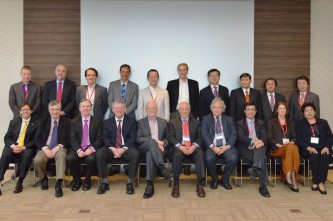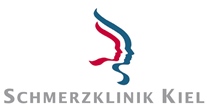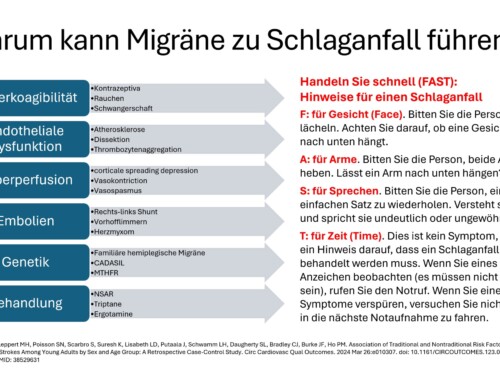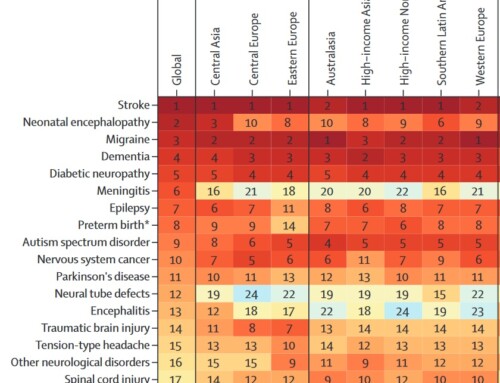awarded  Prof. Hartmut Göbel from the Kiel Pain Clinic the international certificate “Headache Master accredited by the International Headache Society” The Headache Master program was one of the most significant innovations in headache medicine in 2013. It reflects the expertise and specialization in care at an international level. The certificate was awarded following the International Headache Master School 2013 in Asia and the IHS post-learning program.
Prof. Hartmut Göbel from the Kiel Pain Clinic the international certificate “Headache Master accredited by the International Headache Society” The Headache Master program was one of the most significant innovations in headache medicine in 2013. It reflects the expertise and specialization in care at an international level. The certificate was awarded following the International Headache Master School 2013 in Asia and the IHS post-learning program.
Headache Master-School 2013 in Asia  on March 23-24, 2013 in Tokyo, Japan . The event brought together over a dozen world-renowned headache experts to educate participants from Southeast Asia on the future possibilities of headache care. The meeting resulted from close collaboration between the Asian headache specialists and the international headache society. The core goal of the conference was to educate leading headache experts for the next generation. They should be motivated to make the world a better place for migraine and headache sufferers. The meeting was organized on site by the chairman of the organizing committee, Professor Fumihiko Sakai. More than 150 applications were received after just a few days of registration, meaning that admission to the course had to be limited. The interest was very high and so were the expectations of the participants.
on March 23-24, 2013 in Tokyo, Japan . The event brought together over a dozen world-renowned headache experts to educate participants from Southeast Asia on the future possibilities of headache care. The meeting resulted from close collaboration between the Asian headache specialists and the international headache society. The core goal of the conference was to educate leading headache experts for the next generation. They should be motivated to make the world a better place for migraine and headache sufferers. The meeting was organized on site by the chairman of the organizing committee, Professor Fumihiko Sakai. More than 150 applications were received after just a few days of registration, meaning that admission to the course had to be limited. The interest was very high and so were the expectations of the participants.
 The Headache Master School 2013 covered all the important content of modern headache medicine. In recent years, significant advances have been made in understanding the pathophysiology of many headache disorders. Accordingly, many new research highlights were discussed and the implementation of current research results in the care of headache patients was discussed and practiced. The international teachers involved provided the participants with their first-hand knowledge and experience. The students had a high motivation to learn and a great desire to acquire new knowledge. All students actively participated in the case-based learning units offered in small groups by the headache experts in addition to the plenary lectures. In this way, special diagnostic features, the therapeutic approach as well as progress and success monitoring could be learned and practiced using practical examples.
The Headache Master School 2013 covered all the important content of modern headache medicine. In recent years, significant advances have been made in understanding the pathophysiology of many headache disorders. Accordingly, many new research highlights were discussed and the implementation of current research results in the care of headache patients was discussed and practiced. The international teachers involved provided the participants with their first-hand knowledge and experience. The students had a high motivation to learn and a great desire to acquire new knowledge. All students actively participated in the case-based learning units offered in small groups by the headache experts in addition to the plenary lectures. In this way, special diagnostic features, the therapeutic approach as well as progress and success monitoring could be learned and practiced using practical examples.
 The organizing committee consisted of Fumihiko Sakai (Chair) Japanese Headache Society, Peter Goadsby (USA) International Headache Society, Guus G Schoonman (Netherlands) International Headache Society, Allan Purdy (Canada) International Headache Society, Norihiro Suzukiv (Japan). The invited teachers were Guus G Schoonman (Netherlands), Allan Purdy (Canada), Rami Burstein (USA), Andrew Charles (USA), Hans C Diener (Germany), David W Dodick (USA), Michel Ferrari (Netherlands), Peter Goadsby (USA), Hartmut Göbel (Germany), Vincenzo Guidetti (Italy), Anne MacGregor (UK), Jean Schoenen (Belgium), Alan M Rapoport (USA), Alessandro S Zagami (Australia), participants were delegates from the national headache societies of Japan, Korea, China, Philippines, Taiwan, Thailand, Singapore, India, Australia, Malaysia and Myanmar.
The organizing committee consisted of Fumihiko Sakai (Chair) Japanese Headache Society, Peter Goadsby (USA) International Headache Society, Guus G Schoonman (Netherlands) International Headache Society, Allan Purdy (Canada) International Headache Society, Norihiro Suzukiv (Japan). The invited teachers were Guus G Schoonman (Netherlands), Allan Purdy (Canada), Rami Burstein (USA), Andrew Charles (USA), Hans C Diener (Germany), David W Dodick (USA), Michel Ferrari (Netherlands), Peter Goadsby (USA), Hartmut Göbel (Germany), Vincenzo Guidetti (Italy), Anne MacGregor (UK), Jean Schoenen (Belgium), Alan M Rapoport (USA), Alessandro S Zagami (Australia), participants were delegates from the national headache societies of Japan, Korea, China, Philippines, Taiwan, Thailand, Singapore, India, Australia, Malaysia and Myanmar.
 The topics of the Headache Master School 2013 covered the new edition of the international headache classification (ICHD-III), migraine mechanisms, practical applications of acute medication for migraines, anamnesis and examination of headache patients, the treatment of chronic migraines and chronic tension-type headaches , headaches in children, the pathomechanisms of headaches, trigemino-autonomic headache disorders, medication overuse headaches, headaches in women's lives, integrated and coordinated approaches in headache care, neuromodulation and other central topics in current headache medicine.
The topics of the Headache Master School 2013 covered the new edition of the international headache classification (ICHD-III), migraine mechanisms, practical applications of acute medication for migraines, anamnesis and examination of headache patients, the treatment of chronic migraines and chronic tension-type headaches , headaches in children, the pathomechanisms of headaches, trigemino-autonomic headache disorders, medication overuse headaches, headaches in women's lives, integrated and coordinated approaches in headache care, neuromodulation and other central topics in current headache medicine.
 Prof. Hartmut Göbel from the Kiel Pain Clinic presented coordinated and integrated care within the framework of a national headache network. He provided information about the conception, structure and implementation of coordinated headache care. It also became clear for Asian countries that obstacles to adequate care for the widespread disease pain are not due to a lack of scientific knowledge. The deficits identified by current health care research are largely based on organizational deficiencies in the care landscape. The lack of training and further education of doctors and therapists in pain therapy is the most significant obstacle to efficient pain therapy. Resource deficits, lack of attention to the special concerns of specific clinical pictures, inadequate reimbursement by health insurance companies, organizational difficulties, lack of provision of resources, incorrectly set priorities, lack of coordination and integration, mismanagement, lack of political awareness, shortage of doctors and general organizational errors are the biggest stumbling blocks that a efficient and modern pain therapy. Contemporary pain therapy requires central awareness among health policymakers, health insurance companies, experts, specialist societies and those affected in order to jointly address the lack of priority and the general organizational and coordination errors. Asia has recognized this and sees modern headache medicine as an indicator of a modern healthcare system.
Prof. Hartmut Göbel from the Kiel Pain Clinic presented coordinated and integrated care within the framework of a national headache network. He provided information about the conception, structure and implementation of coordinated headache care. It also became clear for Asian countries that obstacles to adequate care for the widespread disease pain are not due to a lack of scientific knowledge. The deficits identified by current health care research are largely based on organizational deficiencies in the care landscape. The lack of training and further education of doctors and therapists in pain therapy is the most significant obstacle to efficient pain therapy. Resource deficits, lack of attention to the special concerns of specific clinical pictures, inadequate reimbursement by health insurance companies, organizational difficulties, lack of provision of resources, incorrectly set priorities, lack of coordination and integration, mismanagement, lack of political awareness, shortage of doctors and general organizational errors are the biggest stumbling blocks that a efficient and modern pain therapy. Contemporary pain therapy requires central awareness among health policymakers, health insurance companies, experts, specialist societies and those affected in order to jointly address the lack of priority and the general organizational and coordination errors. Asia has recognized this and sees modern headache medicine as an indicator of a modern healthcare system.
The program proved to be a great success in further motivating modern headache medicine in Asia. The event proved to be a model for the development of modern headache medicine in other parts of the world and should be continued continuously.
































Leave a comment